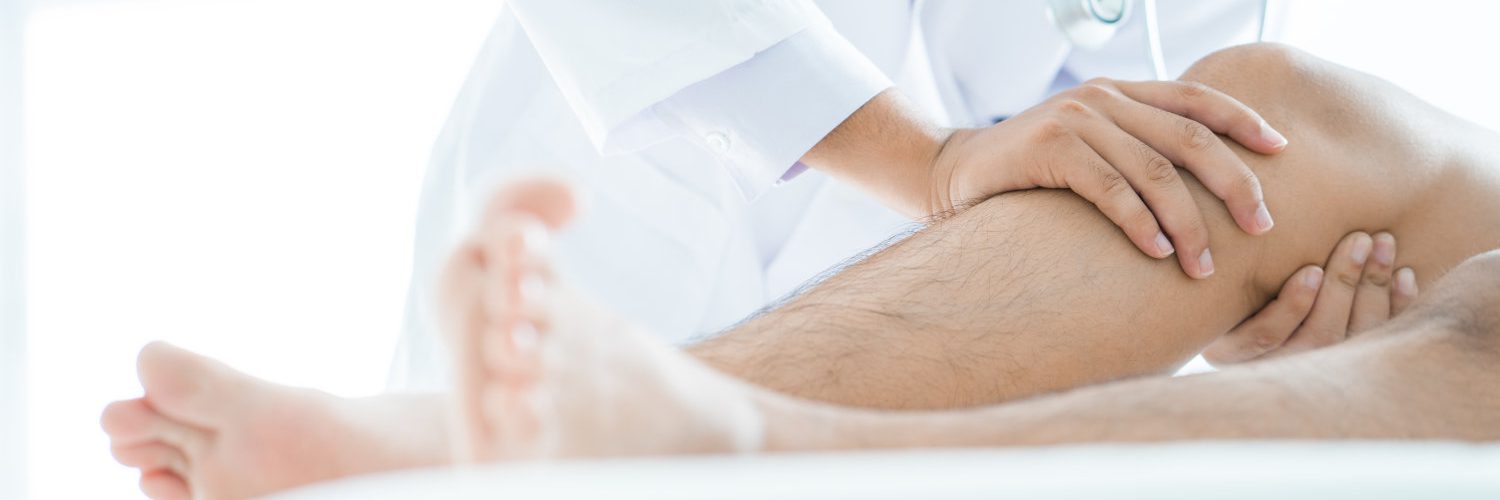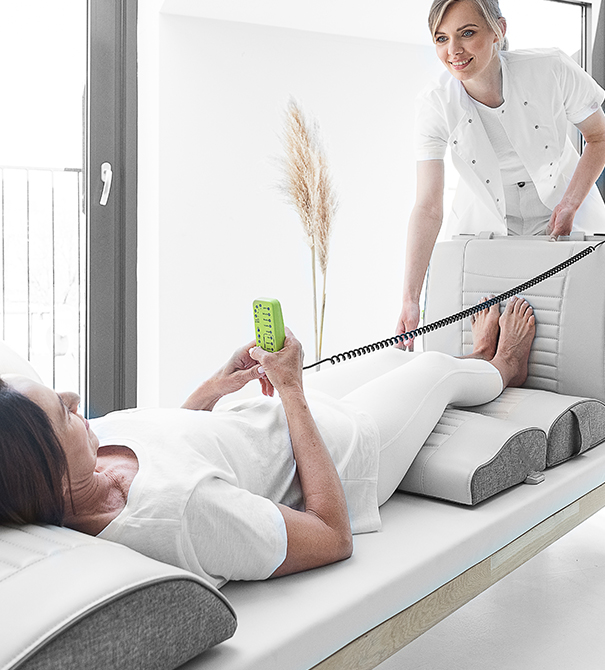Aching legs, a feeling of heaviness and pain under the knee, pain along the tibia, leg pain at night and at rest - we write about the possible causes of all these types of pain. We indicate which complaints require urgent medical consultation and when it is enough to bet on proper prevention.
Leg pain and its causes
Leg pain can be associated with many different structures: muscles, fascias, joints, blood vessels (veins and arteries), nerves. Diagnosis is often made more difficult by the fact that the pain does not have a single source, but conditions or pathologies coexist, especially in older people. The best way to deal with leg pain is to see a general practitioner who, after taking a history, will refer you to the appropriate specialist: neurologist, orthopaedist or rheumatologist, phlebologist, angiologist or physiotherapist. Some imaging tests will probably be necessary, e.g. X-ray, joint ultrasound, Doppler ultrasound, CT scan or MRI, as well as blood tests and blood flow. Below are examples of the most common types of leg pain, along with their possible causes. Some conditions are very serious and should not be assumed based on self-diagnosis. Neither fear nor downplaying leg pain is a good approach. Remember that no written advice – even if the author is an eminent specialist – can replace a visit to a doctor or physiotherapist.
Sharp pain in the legs
A sharp, piercing pain in the legs, radiating from the calf to the thighs, may accompany diseases of the musculoskeletal system, the nervous system or the vascular system. While we can recognise a knee joint problem quite easily, the connection between spinal lesions and leg pain is not so intuitive. Very often, it is pressure on the nerves in the lumbar region that is the cause of radiating, wrenching pain in the whole leg (from thigh to foot). This is due to pressure on the sciatic nerve, consisting of the spinal nerves L4, L5 and S1. The course of these nerves can be found in the graphic below:
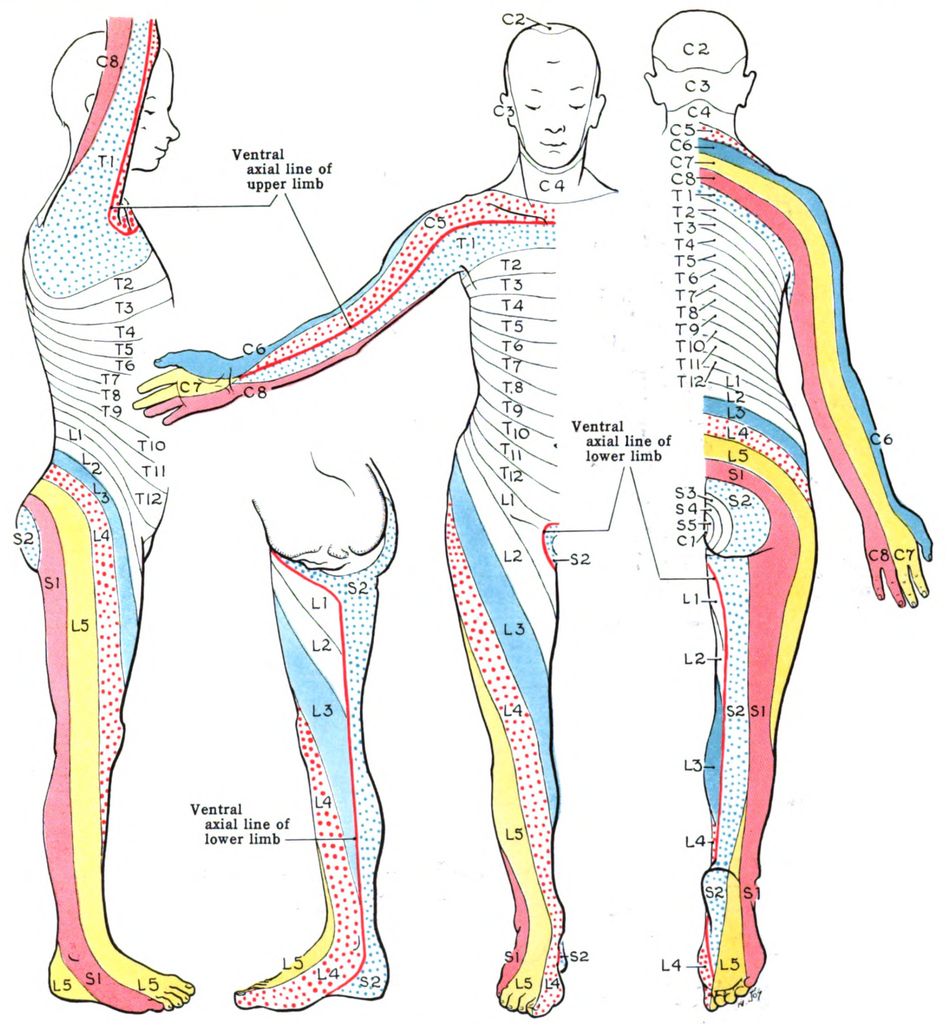
This type of pain occurs with sciatica, femoral sciatica, but can also result from arthritis, especially of the sacroiliac joint.
Leg pain when walking
If excruciating leg pain occurs while walking and subsides after resting for a while, it may have a vascular origin: a peripheral circulation disorder caused by narrowing and obstruction of the arteries. This condition is referred to as challegia. If, on the other hand, a wrenching leg pain occurs together with a feeling of coldness in the limb, it is most often indicative of ischaemia. These types of symptoms can be linked to atherosclerosis, and should not be taken lightly but should be seen by a doctor immediately.
Leg pain below the knee, feeling of “heavy legs”
Leg pain below the knee is very often combined with varicose veins. Is this really the most common cause? If we have not experienced previous trauma, the pain is not of a muscular overload nature (e.g. after a strenuous workout, an activity to which we are not accustomed), there is a good chance that it could be due to pathological changes in the veins. This type of pain may have various causes, initially it may occur after prolonged standing or adopting a position that impedes blood circulation (putting one leg over the other, sitting on a contracted leg, adopting a sitting position for too long, tight trousers). If you notice such symptoms in yourself and walking becomes a problem, it is worthwhile to introduce prophylaxis as soon as possible: physical activity, comfortable clothing, remembering to keep a straight posture, treatments that support blood circulation and eliminate factors that may have a negative impact on the condition of veins (unsuitable diet, smoking, drinking alcohol). This is because, over time, blood stasis, inflammation and venous thrombosis, a serious disease, can occur. The leg pain accompanying thrombosis is most often accompanied by a “spreading” sensation, swelling, increased muscle tension, and less often by bruising and redness. It requires medical consultation as soon as possible.
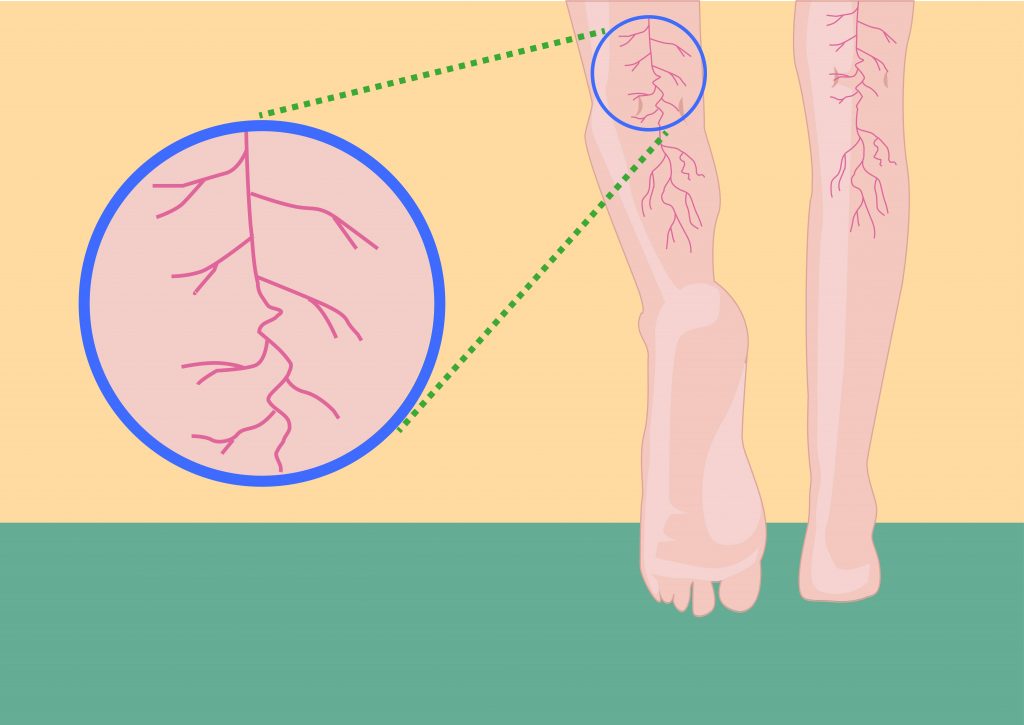
Causes of leg pain
However, leg pain below the knee is not always related to blood vessels. Sometimes its cause is quite trivial and easily treatable, and is a deficiency of certain elements, especially magnesium, potassium and calcium. In such cases, calf pain is often accompanied by painful cramps in the lower limb. In addition, pain in this area may be related to degeneration of the knee joint. In such cases, we usually visit the doctor with knee pain, but over time it can also involve the area below the knee. The doctor will determine on the basis of an examination the origin of the pain whether it is related to mechanical damage, e.g. bone fractures, tendon ruptures or abnormal circulation, inflammation or atherosclerotic changes.
Leg pain along the tibia
Another type of leg pain occurs on the outer part of the calves and we usually say that it hurts along the tibia. In this case, the underlying cause of the pain can also be related to the vascular system (or, more specifically, to changes in the veins). If this cause has been eliminated during a venous examination and there has been no previous trauma, the pain may be due to the following factors:
- Walking in ill-fitting and uncomfortable footwear – this mainly refers to wearing high-heeled shoes that negatively affect the Achilles tendon (over time they can even cause structural changes to the tendon) and footwear that does not support the foot properly and forces an unnatural gait – flip-flops are on the podiatrists’ “black list”. Unfortunately, there are more and more women walking in ill-fitting and excessively high footwear.
- Changes in the structure of the calf muscles caused by prolonged wearing of high-heeled shoes – this point is also related to footwear, but it is so important that we decided to single it out, because leg pain (in the calves, especially along the tibia) occurs in women when they change their habits and choose shoes with a flat sole instead of high heels. Suddenly, it appears that the legs do not hurt when walking in shoes that are advised against by doctors, but they hurt when the correct footwear is worn. This is due to changes that have taken place in the muscles. According to a study by researchers from the Department of Physiology of Ageing at Manchester Metropolitan University, it shows that wearing high-heeled shoes for long periods of time shortens muscle fibres by 13%. It also stiffens the Achilles tendon. It can also cause changes to the ankle joint and injury to the lower limbs When this happens, high heels should be gradually abandoned.
- Muscle overload – affects not only athletes, but also people who do standing or sitting jobs. In this situation, prevention is key – taking up exercises adapted to one’s own capabilities, taking care of one’s diet, and taking short breaks at work to “stretch” the muscles. Regular exercise is essential for good health, but remember that legs need to rest too.
- Degenerative changes of the spine – pain radiates from the spine to the calf, and if it only manifests itself along the tibia (the inner part of the calf does not hurt), then pressure is exerted on the L5 and S1 spinal nerve. Often, however, degenerative changes affect the entire lumbar nerve plexus (the so-called sciatic nerves).Leg pain with this condition is very persistent.
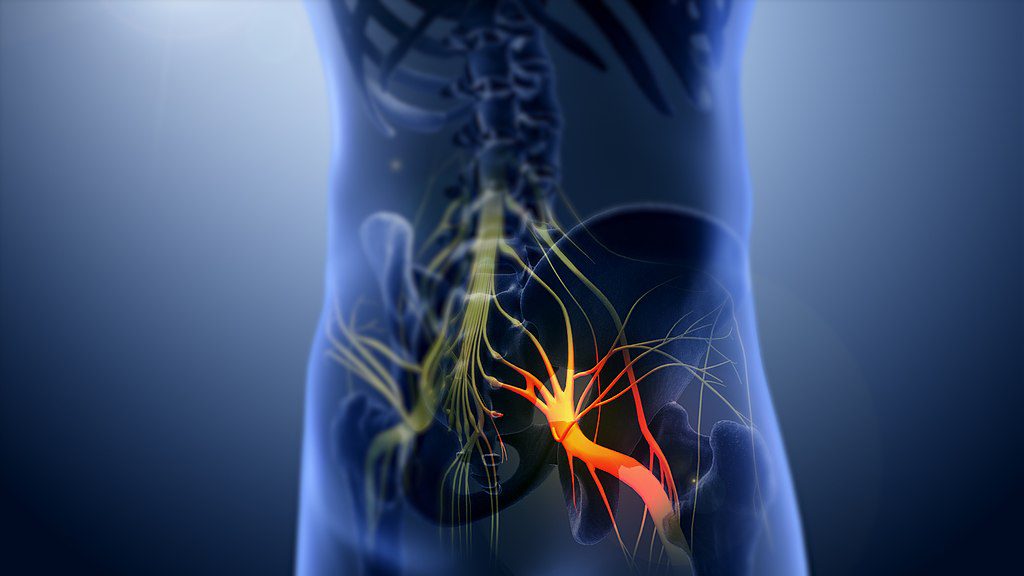
Leg pain at night and at rest
Leg pain at night is usually very worrying because it is a phenomenon that is not entirely logical: our legs do not hurt when we walk or when we stand (or the pain is very slight), whereas they start to hurt when we rest. The causes of leg pain at night and at rest in general are many. The most common are:
- Metabolic disorders related to deficiencies of key elements (potassium, magnesium, calcium) – in this situation, the pain is usually due to nocturnal muscle cramps. Deficiencies of these elements can occur during dehydration (especially in summer when we need more fluids), in people who are dieting, following a restrictive diet.
- Restless legs syndrome – the causes of leg pain for this condition are not clearly established, it may accompany other diseases (e.g. rheumatic, diabetes) or it may take on a primary form. Restless legs syndrome – in addition to pain at rest, especially at night – is also manifested by uncontrolled movements of the limbs, a tingling sensation. The pain usually subsides during daily activity. It is also possible that inadequate venous circulation is involved.
- Chronic venous insufficiency – the advanced form of this disease is associated with thrombosis, which we have written about in the section on leg pain below the knees. The pain resulting from pathological changes in the veins does not subside during the day, but takes on a dull character and can cause pain. On the other hand, it often intensifies at night. If you notice telangiectasias (commonly known as ‘spider veins’) on your legs, often accompanied by a feeling of ‘heavy legs’, it is already worth checking with your doctor about the condition of your veins. Introducing preventive measures reduces the chance of developing venous insufficiency.
- Degenerative changes involving the lumbar spine – we have written about these in more detail in the chapter on leg pain. Here we will just remind you that pressure on the spinal nerves causes radiating pain, usually involving the area from the lumbar region, through the buttocks and legs to the feet. Of course, much depends on which nerves are being compressed. It is important to ensure correct posture at rest.
- Rheumatic diseases – involving the joints of the lower limbs (knees, ankle joint) and then manifesting as bone pain. This pain is usually of high intensity, occurring at rest and subsiding during activity. It is accompanied by stiffness of the limbs and chronic pain.
The above list is not exhaustive of all the causes of leg pain occurring at night; moreover, they can be of a complex nature. As we can see – sometimes the cause of leg pain is quite trivial and easy to treat (change of footwear, potassium and magnesium supplementation, introduction of appropriate prophylaxis), but often the pain is related to serious diseases. If the pain is sharp, wrenching and does not subside after a few days, it is always important to see a doctor.
Leg pain from the knees down
The causes of leg pain can vary greatly, whatever the cause, we should not underestimate it. Precisely because of the considerable number of causes that can cause leg pain from the knee down, it is worth taking care to diagnose them correctly. The causes may lie in the osteoarticular system, the spine or the cardiovascular system. Any of these elements can be the cause of leg pain and, if untreated, lead to serious conditions. The most common health problems causing leg pain are chronic venous insufficiency and deep vein thrombosis, sciatica, water-electrolyte disorders, injuries and joint strain. Other possible causes of leg pain include arthritis, tendonitis and chronic osteoarthritis, gout.
Treatment of leg pain
The treatment of leg pain depends on the cause – there will be a different management for those suffering from atherosclerosis, others for those suffering from degenerative or vascular disease. It is impossible to describe all the therapeutic recommendations for so many conditions in one article, but we cover individual topics in our service. In the sections: Pain Treatment as well as Diseases and Medical Conditions, you will find articles on how to relieve degenerative pain, rheumatic pain, etc., as well as information on different types of conditions. We encourage you to take a look at them. However, we would like to emphasise here that treatment achieves the best results if it is comprehensive, and in the case of a great many conditions, one of the most important elements of therapy is physical treatment to reduce pain. These include, among others, electrotherapy, magnetotherapy, laser therapy, but also vibrotherapy, and it is the latter that we will write a little more about, as it is still a less popular method, and numerous studies have confirmed its effectiveness, not only in the treatment of pain.
How to get rid of leg pain – preventive measures
Once we are bothered by leg pain and we know the cause, we can effectively deal with it on a daily basis. As we wrote earlier, physical therapy and appropriate management are of great importance here. Preventing leg pain is just as important as treating the pain. What type of footwear we wear, our physical activity and the type of work we do is important here. In addition, being overweight, smoking or a sedentary lifestyle contribute to conditions that cause leg pain. To prevent leg pain, make sure you are at the right weight, wearing comfortable shoes, eating a healthy diet and getting the right amount of physical activity.
How to deal with leg pain
Leg pain is often accompanied by other complaints. This is often tingling, numbness and a feeling of heaviness. This is particularly the case when the pain causes obstructed blood flow in the limbs. Overload pain is most often acute and impedes normal function. Leg pain of this origin very often passes after a short time and does not cause any longer discomfort. Depending on the cause of the pain, we can deal with it in different ways. In the case of overload and trauma, painkillers and rest help. When the cause of pain is nerve compression and problems with the lumbar spine, it will be necessary to implement appropriate treatment by a doctor. When the problem is venous insufficiency or thrombosis, in addition to specialised medication, increased physical activity and physical therapy, resting with the legs slightly elevated helps. In order to take proper care of your legs, let us also take care of comfortable shoes and the condition of our spine.
Vibrotherapy for leg pain
Vibrotherapy uses local vibrations (applied to a certain part of the body) and/or general vibrations (applied to the whole body) as a therapeutic stimulus. It is a method that has been used for centuries, but has recently gained particular popularity as devices have been developed that combine local and general vibrations and generate mechanical waves in three directions simultaneously (oscillatory-cycloidal vibration). This has significantly increased the effectiveness of vibrotherapy in the treatment of pain and many conditions.
A major contribution to the development of this method has been made by the Vitberg company from Nowy Sącz, which developed the Vitberg RS – the only oscillatory-cycloidal vibration therapy device available in Poland, combining local and general vibration. Its effectiveness is being studied by many scientists. Why is vibrotherapy recommended for leg pain? The multifaceted effect of this treatment method is particularly noteworthy. It has been proven that vibrotherapy:
- It eliminates or alleviates pain through the action of a so-called gate control – if the pain impulse encounters a stronger impulse, it is not transmitted to the brain (it is blocked). This is how vibrotherapy, but also electrotherapy, works.
- It improves blood circulation – it affects vasodilation, regulates blood pressure and lowers the heart rate. Vibrotherapy is used for people suffering from varicose veins and swelling of the limbs. It can therefore be used as a therapy for pain of venous origin, but is also a great type of prevention of venous disease.
- It improves bone mineral density, which is particularly important for people suffering from rheumatoid arthritis and osteoporosis – this effect has been proven in studies by Polish and foreign scientists (e.g. from the University of the Witwatersrand in Johannesburg).
- Relaxes and strengthens muscles – it can be used to relieve pain resulting from excessive muscle tension and as a form of rehabilitation after injury. The effect of vibrotherapy on muscles will also be appreciated by people who perform standing or sitting work. Vibrotherapy cannot replace physical activity, but it can prepare for it and improve neuromuscular efficiency.
Vibrotherapy can therefore be used successfully by people suffering from leg pain of various causes. Of course, medical management should be consulted with a doctor or physiotherapist and vibrotherapy should be used as one of the therapies for more severe conditions.
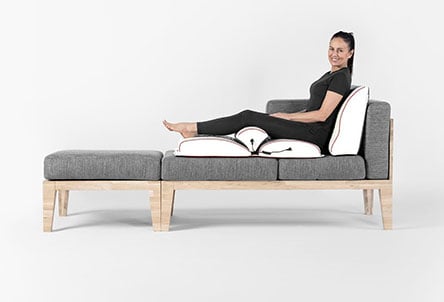
Vibrotherapy can therefore be successfully used by people suffering from leg pain of various causes. Of course, medical management should be consulted with a doctor or physiotherapist and, in the case of more severe diseases, use vibrotherapy as one of the therapy methods.
References:
- Dobrogowski J, Zajączkowska R., Dutka J., Wordliczek J., Patofizjologia i klasyfikacja bólu, Pol. Przegl. Neurol 2011;7(1):20-30.
- Paplaczyk M, Gawor A, Ciura G. Ocena jakości życia pacjentów z bólem przewlekłym w przebiegu choroby niedokrwiennej kończyn dolnych. Pielęgniarstwo Chirurgiczne i Angiologiczne. 2015; 3 (9): 135-140.
- Windyga J., Podolak-Dawidziak M., Chojnowski K. Zasady rozpoznawania żylnej choroby zakrzepowo-zatorowej. Hematologia 2010;1(2):93-101.
- R. Csapo, C. N. Maganaris, O. R. Seynnes and M. V. Narici On muscle, tendon and high heels. The Journal of Experimental Biology 213, 2582-2588 2010.
- Mrozek P. (2010) Ocena wyników leczenia dolegliwości bólowych kręgosłupa w odcinku lędźwiowo-krzyżowym masażem wibroakustycznym. Uniwersytet Medyczny w Łodzi.
- Prioreschi A., Makda M., Tikly M., McVeigh J. In Patients with Established RA, Positive Effects of a Randomised Three Month WBV Therapy Intervention on Functional Ability, Bone Mineral Density and Fatigue Are Sustained for up to Six Months. DOI:10.1371/journal.pone.0153470 April 13, 2016.
- Boucher J.A. ,Abboud J., Nougarou F., Normand, M.C., Descarreaux M. The Effects of Vibration and Muscle Fatigue on Trunk Sensorimotor Control in Low Back Pain Patients. PLoS One. 2015; 10(8): e0135838.

